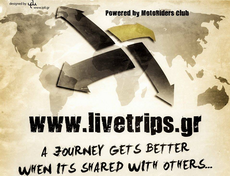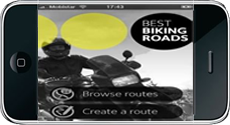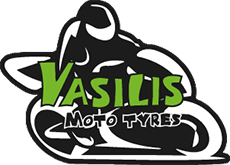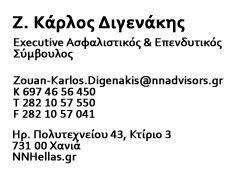Ένα ταξίδι στο εξωτερικό δεν είναι ούτε εύκολη αλλά ούτε και δύσκολη υπόθεση. Καταρχάς το αιώνιο ελληνικό πρόβλημα. Η χαρτούρα και η ταλαιπωρία για να την αποκτήσετε. Και κατά δεύτερον τι πράγματα πρέπει να προσέξετε για να αποφύγετε τις χαζές ταλαιπωρίες. Μέσα από αυτές τις γραμμές θα προσπαθήσουμε να σας δώσουμε μια γενική εικόνα για το τι χρειάζεστε και πως θα το αποκτήσετε:

Τελευταία ενημέρωση:
- Άδεια, ασφάλεια, δίπλωμα, διαβατήριο κτλπ
Η άδεια της μοτοσυκλέτας σας, ισχύει για τις χώρες της Ευρώπης, της Βόρειας Αμερικής, αλλά και μερικών της Ασίας (πχ Τουρκία, Γεωργία, Ρωσία, Αρμενία, Αζερμπαϊτζάν). Στα κράτη της νότιας Ασίας και της Αφρικής απαιτείται από τις εκεί τελωνειακές αρχές, κατά την είσοδο ενός οχήματος με ξένες πινακίδες κυκλοφορίας, το διεθνές πιστοποιητικό πορείας (πολύπτυχο). Το πιστοποιητικό αυτό υποτίθετε ότι εκδίδεται από την ΕΛΠΑ, με την προσκόμιση της ελληνικής άδειας κυκλοφορίας και του διαβατηρίου του ιδιοκτήτη του. Σύμφωνα με τις τελευταίες πληροφορίες η ΕΛΠΑ δεν είναι μέλος της Διεθνούς Ομοσπονδίας FIA (Federation Internationale de I’ Automobile) και κατά συνέπεια δεν έχει την δικαιοδοσία να εκδίδει Carnet de Passages (πολύπτυχο). Υπάρχουν αναφορές ότι μπορείτε να εκδώσετε μέσω της γερμανικής ADAC όπου σύμφωνα με την ιστοσελίδα τους εκδίδουν πολύπτυχα για οποιοδήποτε όχημα με Ευρωπαϊκές πινακίδες. Η ADAC ζητάει για την έκδοση: Αίτηση που θα βρείτε στην ιστοσελίδα της, αντίγραφο διαβατηρίου και αντίγραφο της άδειας του οχήματος. Το κόστος αν έχω καταλάβει καλά είναι 350€ για την έκδοση του πολύπτυχου και 70€ για την αποστολή του με κούριερ. Σημειωτέον ότι θα πρέπει να έχετε νέου τύπου πινακίδα η οποία θα έχει το σήμα εθνικότητας -το GR δηλαδή. Αν έχετε παλιού τύπου πινακίδα τότε φροντίστε να προμηθευτείτε το σήμα εθνικότητας. Το παραπάνω δεν ελέγχεται αυστηρά, αλλά υπάρχει περίπτωση να πέσετε σε κάποιον “τυπικό” υπάλληλο.
Όσο αναφορά το δίπλωμά σας, αντιγράφω το τι αναφέρει η σελίδα του υπουργείου μεταφορών: “Για τους κατόχους παλαιού τύπου Ελληνικής άδειας οδήγησης (χάρτινη ροζ ή πράσινη) εκδίδεται Διεθνής άδεια για τα κράτη Μέλη της Ευρωπαϊκής Ένωσης όπως επίσης και για όλες τις χώρες των άλλων ηπείρων. Για τους κατόχους νέου τύπου Ελληνικής άδειας οδήγησης (πλαστική κάρτα) η έκδοση Διεθνούς άδειας είναι απαραίτητη για ορισμένα κράτη της Ευρώπης που δεν είναι Μέλη της Ευρωπαϊκής Ένωσης καθώς επίσης και για όλες τις χώρες των άλλων ηπείρων. Η Διεθνής άδεια είναι απαραίτητη για την οδήγηση αυτοκινήτου ή μοτοσυκλέτας ιδιόκτητων ή ενοικιαζόμενων.”
Στην πραγματικότητα τα πράγματα στη Ευρώπη είναι πιο χαλαρά. Έχουμε νοικιάσει μοτοσυκλέτα με παλαιού τύπου δίπλωμα (ροζ) και σε οποιοδήποτε έλεγχο και αν μας έχει γίνει ποτέ δεν μας έχει ζητηθεί διεθνές δίπλωμα οδήγησης (ακόμη και εκτός Ευρώπης). Μην το πάρετε σαν δεδομένο όμως… είναι το πού θα “πέσεις”…
Τώρα για να εκδώσετε διεθνές δίπλωμα θα πρέπει να απευθυνθείτε στην ΕΛΠΑ. Η νέα ιστοσελίδα της ΕΛΠΑ αναφέρει ότι για την έκδοση διεθνούς διπλώματος απαιτείται μία πρόσφατη φωτογραφία διαβατηρίου, το δίπλωμά σας -σε ισχύ φυσικά- και το διαβατήριο ή τη νέου τύπου ταυτότητά σας (ανάλογα με το ποιο έγγραφο θα χρησιμοποιηθεί στο ταξίδι). Η διαδικασία διεκπεραιώνεται αυθημερόν και η ισχύ είναι για 1 ή για 3 έτη. Το κόστος του ανέρχεται σε 70€ ή 130€ αντίστοιχα.
Όσο αφορά την ασφάλεια της μοτοσυκλέτας, τα πράγματα είναι πιο απλά. Απλά επισκεφθείτε τον ασφαλιστικό σας φορέα και ζητήστε να σας εκδώσουν «πράσινη κάρτα». Η πράσινη κάρτα ισχύει και πάλι για χώρες της ΕΕ (συνήθως ενημερώνετε τον ασφαλιστικό σας φορέα σε ποιες χώρες θα ταξιδέψετε) και ο χρόνος έκδοσης της είναι άμεσος (δεν έχει πέσει στην αντίληψη μου κάποια ασφαλιστική εταιρία που να καθυστερεί την έκδοση του, αλλά ίσως να υπάρχει κάποια). Κάποιες ασφαλιστικές εταιρείες -ίσως και όλες, δεν μπορώ να πω με σιγουριά- εκδίδουν πράσινη κάρτα με ισχύ μέχρι την λήξη του συμβολαίου σας. Παλαιότερα, προσωπικά πάντα, ενημέρωνα την ασφαλιστική εταιρεία για το διάστημα που θα απουσιάζω και ακολούθως μου έκδιδαν την κάρτα. Για χώρες εκτός ΕΕ ενημερωθείτε απ’ τον ασφαλιστικό σας φορέα (ορισμένες εταιρίες έχουν συμβάσεις με κάποιους ασφαλιστικούς φορείς σε διάφορες χώρες). Μερικές ασφαλιστικές εταιρίες χρεώνουν για την έκδοση της πράσινης κάρτας αλλά σε γενικό βαθμό η έκδοσή της για χώρες της ΕΕ είναι δωρεάν.
Σε χώρες της ΕΕ αλλά και σε αρκετές βαλκανικές και γειτονικές χώρες (Αλβανία, Σερβία, Βόρεια Μακεδονία, Κροατία, Μαυροβούνιο, Τουρκία), δεν χρειάζεται διαβατήριο. Αρκεί η ταυτότητά σας να είναι νέου τύπου, δηλαδή και με λατινικούς χαρακτήρες. Σε περίπτωση που χρειάζεται να εκδώσετε διαβατήριο, η διαδικασία έκδοσης γίνεται από το αστυνομικό τμήμα της περιοχή σας και για την έκδοση του χρειάζονται τα παρακάτω δικαιολογητικά: Μια πρόσφατη (τελευταίου μήνα) έγχρωμη ψηφιακή φωτογραφία 4×6 εκ. καθορισμένων τεχνικών προδιαγραφών, Ηλεκτρονικό παράβολο για την πιστοποίηση πληρωμής των τελών έκδοσης του διαβατηρίου (για διαβατήριο 10ετούς διάρκειας 80€), φωτοαντίγραφο των δύο όψεων του δελτίου ταυτότητας (στην ίδια σελίδα) και αίτηση έκδοσης διαβατηρίου η οποία εκτυπώνεται στα Γραφεία Υποδοχής Αιτημάτων και στην οποία είναι ενσωματωμένη υπεύθυνη δήλωση όπου ο ενδιαφερόμενος αναφέρει:
• Αν έχει καταδικαστεί τελεσίδικα για πλαστογραφία, πλαστογραφία πιστοποιητικών, υφαρπαγή ψευδούς βεβαίωσης, υπεξαγωγή εγγράφων, ψευδή κατάθεση ή ψευδή δήλωση [άρθρα 216, 217, 220, 222 και 224 Ποινικού Κώδικα και παρ. 6 του άρθρου 22 του ν. 1599/1986 (Α΄ 75)] εφόσον η τέλεση αυτών σχετίζεται με την έκδοση, τη χρήση, την απώλεια ή την κλοπή του διαβατηρίου ή του δελτίου αστυνομικής ταυτότητας.
• Αν έχει καταδικαστεί τελεσίδικα για αρπαγή, εμπορία ανθρώπων, αρπαγή ανηλίκων (άρθρα 322, 323Α, 324 του Ποινικού Κώδικα) ή για τις πράξεις των παρ. 5, 6 και 7 του άρθρου 29 και των παρ. 1 και 2 του άρθρου 30 του ν. 4251/2014 (Α΄ 80), όπως ισχύουν.
• Αν εκκρεμεί σε βάρος του μέτρο απαγόρευσης εξόδου από τη χώρα.
• Αν έχει κηρυχθεί ανυπότακτος ή λιποτάκτης.
• Αν έχει κηρυχθεί ανυπότακτος εξωτερικού.
• Αν εκτίει στερητική της ελευθερίας ποινή ή είναι υπόδικος και του έχει επιβληθεί προσωρινή κράτηση.
• Αν εκκρεμεί σε βάρος του τελεσίδικη καταδικαστική απόφαση που δεν έχει εκτελεστεί ή ένταλμα σύλληψης.
• Αν διαμένει μόνιμα στην αναγραφείσα διεύθυνση κατοικίας και εάν έχει εκδοθεί στο όνομά του διαβατήριο, σύμφωνα με τις διατάξεις Ν. 3103/2003 από την ΕΛ.ΑΣ., το οποίο απωλέσθη, εκλάπη ή ζητείται η ανανέωση ή αντικατάστασή του.
Τέλος, κατά την κατάθεση δικαιολογητικών επιδεικνύεται το πρωτότυπο δελτίο ταυτότητας ή το ψηφιακό (μέσω του Gov.gr Wallet) για έλεγχο ταυτοπροσωπίας. Επίσης, θα πρέπει να γνωρίζετε τον αριθμό δημοτολογίου, εφόσον δεν αναγράφεται στο δελτίο ταυτότητάς σας.
Η διαδικασία έκδοσης κρατάει 3-5 εργάσιμες ημέρες και στη συνέχεια ο ενδιαφερόμενος παραλαμβάνει το διαβατήριο του από το αστυνομικό τμήμα όπου το κατέθεσε. Σε περίπτωση ανανέωσης θα πρέπει να προσκομιστούν τα παραπάνω δικαιολογητικά συν το παλαιό σας διαβατήριο. Σε περίπτωση κλοπής ή απώλειας θα πρέπει εκτός από τα παραπάνω να προσκομίσετε και βεβαίωση Ελληνικής Αρχής (Αστυνομικής ή Προξενικής) στην οποία δηλώθηκε η κλοπή ή η απώλεια, στην οποία αναφέρεται το αποτέλεσμα της διενεργηθείσας έρευνας.
Λόγω του ότι τα παραπάνω αλλάζουν κατά τακτά διαστήματα και ίσως να μην είμαστε σωστά ενημερωμένοι, καλύτερα να τσεκάρετε την επίσημη σελίδα της “Διεύθυνσης Διαβατηρίων“.
Τέλος τσεκάρετε αν χρειάζεστε βίζα για την χώρα που θα ταξιδέψετε στην σελίδα του Υπουργείου Εξωτερικών.
Για την προσωπική σας ασφάλιση (μόνο για χώρες της ΕΕ) θα χρειαστείτε την Ευρωπαϊκή Κάρτα Ασφάλισης Ασθενείας (ΕΚΑΑ) την οποία πια εκδίδετε ηλεκτρονικά μέσω της πλατφόρμας του gov.gr.
Σημ: Καλό θα είναι να έχετε θεωρημένα φωτοαντίγραφα από όλα τα έγγραφα που θα πάρετε μαζί σας, καθώς σε περίπτωση απώλειας τους, ίσως σας λύσουν τα χέρια.
- Πιστωτικές κάρτες & Κάρτες ανάληψης
Οι περισσότερες πιστωτικές κάρτες γίνονται δεκτές στις χώρες της Ευρωπαϊκής Ένωσης. Προσωπικά μου έχει τύχει 2 φορές να μην γίνει δεκτή η πιστωτική κάρτα και αυτό συνέβη σε ένα βενζινάδικο στην Ελβετία και σε ένα στην Τουρκία (και τα δύο περιστατικά έχουν συμβεί πριν το 2010). Καλό θα είναι πάντως να υπάρχουν δύο πιστωτικές κάρτες σε περίπτωση που δεν γίνει δεκτή η μία.
Όσο αφορά τις κάρτες ανάληψης χρημάτων, κοινώς cashcard, οι περισσότερες γίνονται δεκτές και σε ΑΤΜ εκτός συνόρων. Για να είσαστε όμως σίγουροι και για να μην μείνετε «ρέστοι» απευθυνθείτε στην τράπεζά σας. Αν χρησιμοποιήσετε κάρτα για ανάληψη χρημάτων θα χρεωθείτε ένα μικρό ποσό από την τράπεζα του εξωτερικού. Το ποσό αυτό διαφέρει ανάλογα με την τράπεζα. Κυμαίνεται πάντως γύρω στο 1% της συναλλαγής ή πάγιο 3-4€. Μερικές τράπεζες στο αφαιρούν επί των χρημάτων που σηκώνεται ενώ άλλες θα πιστώσουν τον τραπεζικό σας λογαριασμό.
Επίσης, σε χώρες εκτός ευρωζώνης, οι περισσότερες ελληνικές τράπεζες χρεώνουν προμήθεια μετατροπής συναλλάγματος. Για την αποφυγή αυτής της χρέωσης μπορείτε να εκδώσετε μια κάρτα από διαδικτυακή τράπεζα όπως πχ η Revolut. Η συγκεκριμένη τράπεζα χρεώνει ένα μικρό ποσό στην μεταφορά κεφαλαίου αλλά δεν χρεώνει μετατροπή συναλλάγματος. Οι όροι και οι προϋποθέσεις των διαδικτυακών τραπεζών αλλάζουν συχνά, έτσι καλό είναι να κάνετε την έρευνα σας πριν προχωρήσετε σε άνοιγμα λογαριασμού.
- Κινητή τηλεφωνία
Σύμφωνα με Ευρωπαϊκή οδηγία, από τον 6/2017 καταργούνται οι υπέρογκες χρεώσεις περιαγωγής που χρέωναν όλες οι εταιρίες στην Ελλάδα. Εντός ΕΕ μπορείτε να χρησιμοποιείτε το τηλέφωνο σας χωρίς καμία επιπλέον χρέωση, όπως ακριβώς και στην Ελλάδα. Με απλά λόγια το πρόγραμμα σας (δωρεάν λεπτά ομίλιας/internet/sms) ισχύει όπως ακριβώς και στην Ελλάδα.
Για χώρες εκτός ΕΕ τσεκάρετε τι ισχύει με τον πάροχό σας.
Εναλλακτικά υπάρχουν αρκετοί “δωρεάν” τρόποι συνομιλίας πια. Αν έχεις “έξυπνη συσκευή” και internet, τότε έχεις Viber, WhatsApp, Skype κ.α.
Τέλος σε χώρες εκτός ΕΕ καλό θα είναι να προμηθευτείτε τοπικές sim ώστε να έχετε δωρεάν δεδομένα. Συνήθως αυτές οι κάρτες στοιχίζουν ένα πολύ μικρό ποσό, το οποίο το αποσβένουν και με το παραπάνω.
- Σχεδίαση
Το ταξίδι ξεκινά μαζί με την σχεδίαση και η σχεδίαση είναι εξίσου απολαυστική όσο και το ταξίδι. Υπάρχει πια πληθώρα πληροφοριών στο διαδίκτυο που θα σας λύσει τα χέρια. Κατά 99,9% εκεί που θέλετε να πάτε θα έχει πάει κάποιος άλλος ο οποίος θα έχει “αποτυπώσει” κάπου την περιπέτεια του. Αφιερώστε λίγο χρόνο και ψάξτε – διαβάστε στο νετ και να είστε σίγουροι ότι θα βρείτε αρκετές χρήσιμες πληροφορίες. Παρακάτω παραθέτουμε μερικές ιστοσελίδες με πληροφορίες για όμορφες διαδρομές:
Best Biking Roads
Motorcycle Diaries
Για χάρτες που θα σας βοηθήσουν στην σχεδίαση της διαδρομής επισκεφθείτε τα:
Via Michelin
Furkot, road trip planner
Google Maps
Χρήσιμες πληροφορίες για τις περιοχές που θα επισκεφτείτε μπορείτε να βρείτε στα:
wikitravel
Lonely Planet
Caravanistan (για χώρες της ανατολής)
Ή διαβάζοντας παραπλήσια ταξιδιωτικά. Μια μεγάλη γκάμα από ταξιδιωτικά μπορείτε να βρείτε στα:
(Ιστοσελίδες στα Ελληνικά)
ADV Routes
Motoriders Club
MOTOtaxidiotis
(Forum στα Ελληνικά)
ADVride
moto.gr
(Forum στα Αγγλικά)
Advrider
Horizon Unlimited
Μερικές ακόμα χρήσιμες πληροφορίες:
Τιμές καυσίμων:
Global Petrol Prices (από όλο τον κόσμο, σχεδόν καθημερινή ενημέρωση)
Τιμές διοδίων:
Highway tolls and Vignette in Europe (για χώρες της Ευρώπης)
Toll Guru (για Αμερική, Ευρώπη, Αυστραλία και για ένα μεγάλο κομμάτι της Ασίας)
Πρόβλεψη καιρού κατά την διαδρομή:
Morecast
Μετατροπέας συναλλάγματος:
XE – Universal Currency Converter
- Εφαρμογές
Στην εποχή μας τα έξυπνα κινητά είναι ένας φορητός υπολογιστής με πάρα πολλές δυνατότητες. Υπάρχουν δεκάδες εφαρμογές που θα σας λύσουν τα χέρια, κάνοντας το ταξίδι σας πολύ πιο εύκολο. Παρακάτω παραθέτουμε αυτές που χρησιμοποιούμε εμείς (περί ορέξεως κολοκυθόπιτα):
LiveTrip Traveler
Μια πρωτότυπη εφαρμογή (application) για ταξιδιώτες που θέλουν να μοιραστούν το ταξίδι τους με φίλους αλλά και ανθρώπους που έχουν πάθος με τα ταξίδια!!!
Το LiveTripTraveller δίνει την δυνατότητα στους χρήστες της εφαρμογής, να αποστέλλουν “Ζωντανές Ανταποκρίσεις” (κείμενο και φωτογραφία) κατά την διάρκεια του ταξιδιού, μέσω του διαδικτύου αλλά και μέσω μηνυμάτων SMS! Επίσης, μπορεί να αποθηκεύσει και να επεξεργαστεί μηνύματα και να τα αποστείλει όταν βρει διαθέσιμο wifi δίκτυο!
Όλες οι απεσταλμένες Ζωντανές Ανταποκρίσεις “αποτυπώνονται” πάνω σε έναν Live χάρτη, στο οποίο οι επισκέπτες της σελίδας μπορούν να παρακολουθήσουν το ταξίδι!!!
Το LiveTripTraveller είναι το αποτέλεσμα του πάθους και του ρομαντισμού ανθρώπων που έχουν ως μοναδικό σκοπό να ενώσουν ανθρώπους με κοινό πάθος τα ταξίδια και να αναδείξουν γνωστούς και άγνωστούς προορισμούς, μέσω των ανταποκρίσεων των ταξιδιωτών!
Maps.me
Υπάρχουν δεκάδες αξιόλογες εφαρμογές με χάρτες για κινητά αλλά το maps.me είναι μάλλον η ποιο δημοφιλής. Τα συν της συγκεκριμένης εφαρμογής είναι εκτός του ότι είναι δωρεάν, λειτουργεί offline, έχει turn by turn navigation ανάλογα με το όχημα (αυτοκίνητο, ποδήλατο ή πεζοπορία) και διαθέτει πληροφορίες για σημεία ενδιαφέροντος.
XE Currency Converter
Εύχρηστος μετατροπέας συναλλάγματος με αυτόματη ενημέρωση ισοτιμίας.
Splid
Ένα πολύ χρήσιμο προγραμματάκι για να κρατάτε “ταμείο” όταν ταξιδεύτε με φίλους.
Υπολογισμός κόστους ταξιδιού
Στον παραπάνω σύνδεσμο θα βρείτε ένα χρήσιμο excel, το οποίο σας βοηθάει να υπολογίσετε το κόστος του ταξιδιού σας. Το πρόγραμμα σχεδιάστηκε από τον WQFTruckster από το advrider.com και μεταφράστηκε στα ελληνικά από τον Γεώργιο Παντελίδη.
- Εξοπλισμός
Ο εξοπλισμός αναβάτη ποικίλλει ανάλογα με την περιοχή που σκοπεύετε να ταξιδέψετε. Δηλαδή, για ένα “σύντομο” ταξίδι Αυγουστιάτικα στην Τουρκία, δεν θα χρειαστεί να κουβαλάτε επενδύσεις. Αν όμως ο προορισμός σας είναι το βόρειο ακρωτήρι, πάρτε και ισοθερμικό εσώρουχο 😉
Μερικές συμβουλές λοιπόν, όσο αναφορά την ένδυση:
– Τα dry fit / ισοθερμικά μπλουζάκια (ανάλογα τον καιρό) είναι μια πολύ καλή επιλογή. Δεν μουσκεύουν στον ιδρώτα, πλένονται/στεγνώνουν γρήγορα και πιάνουν ελάχιστο χώρο.
– Τα αδιάβροχα είναι απαραίτητα ακόμα αν η μοτοσυκλετιστική σας ένδυση είναι αδιάβροχη. Το μοτοσυκλετιστικό μπουφάν και παντελόνι σας έχουν εσωτερικές αδιάβροχες μεμβράνες. Μπορεί να μην βραχείτε, αλλά σε δυνατή βροχή θα μουσκέψουν και δύσκολα θα ξαναστεγνώσουν για να χρησιμοποιηθούν την επόμενη μέρα.
– Για τον παραπάνω λόγο φροντίστε να έχετε δύο ζευγάρια χοντρά γάντια μαζί σας, καθώς στεγνώνουν πολύ δύσκολα.
Εκτός όμως από τον ρουχισμό απαραίτητα σε κάθε ταξίδι είναι τα εξής:
– Κιτ επισκευής ελαστικού (tubeless) ή σαμπρέλες/μπαλώματα για αυτούς που δεν διαθέτουν tubeless. Αντί για αμπλούλες αέρα, προτείνω να πάρετε μια μικρή ηλεκτρική αντλία αέρα (το μέγεθος τους είναι πολύ μικρό πια) ή -για τους παραδοσιακούς- μια τρόμπα χειρός.
– Εργαλεία τα οποία θα περιλαμβάνουν και εργαλεία για να αφαιρεθούν οι τροχοί. Για εξοικονόμηση χώρου, όταν ταξιδεύετε με παρέα, μπορείτε να φτιάξετε μία εργαλειοθήκη η οποία να “ταιριάζει” για όλες τις μοτοσυκλέτες της παρέας.
– Χρήσιμο είναι να έχετε μαζί σας μία αντλία βενζίνης (για μετάγγιση) και καλώδια μπαταρίας (αχρείαστα να ‘ναι).
– Πάρτε μαζί σας επίσης, ένα μικρό φακό (αν και τα κινητά κάνουν την ίδια δουλειά πια), λιπαντικό για την αλυσίδα (αν έχετε, αλυσίδα ντε), ανταλλακτικές ασφάλειες, δεματικά, μονωτική ταινία και υφασμάτινη ταινία (duct tape) για τα δύσκολα (χτύπα ξύλο). Προσωπικά πάντα κουβαλάω μαζί μου μια έξτρα μανέτα απομόνωσης και ανταλλακτικό γκαζόσυρμα + ποτηράκι (όταν το γκάζι ήταν πατροπαράδοτο και όχι ηλεκτρονικό). Εύκολες επισκευές οι οποίες μπορούν να σε αφήσουν στην μέση του πουθενά.
– Απαραίτητο -και ευχόμαστε αχρείαστο- θεωρείται και ένα μικρό φαρμακείο με μερικές γάζες, οινόπνευμα, βαμβάκι, betadin, ασπιρίνες, χάπια για το στομάχι, κορτιζονούχα χάπια, χάπια για διάρροια και stick για τσιμπήματα. Ένα χρήσιμο τιπ εξοικονόμησης χώρου είναι να πετάξετε όλες τις συσκευασίες των φαρμάκων. Μην αμελήσετε όμως να σημειώσετε τις ημερομηνίες λήξεως τους.
Και μερικά ακόμα γενικά tips:
– Όλα τα χρήσιμα αντικείμενα (πχ φωτογραφική μηχανή, αδιάβροχα κτλ) πρέπει να τοποθετούνται στο tank bag ή σε κάποιο εύκολα προσβάσιμο σημείο. Φανταστείτε να αρχίσει να βρέχει καρεκλοπόδαρα και εσείς να πρέπει να λύσετε τα μπαγκάζια σας για να βρείτε το αδιάβροχο.
– Ανταλλάξτε μεταξύ σας δεύτερα κλειδιά από ότι κλειδαριά κουβαλάτε μαζί σας. Κανείς δε θέλει να μείνει στην μέση του πουθενά χωρίς κλειδιά. Σημειωτέων ότι αυτοί που παραλαμβάνουν κλειδιά θα πρέπει να τα κρατάνε μαζί τους και όχι να τ’ αφήνουν πίσω στο ξενοδοχείο πχ.
– Φροντίστε για την αδιαβροχοποίηση των αποσκευών σας. Μπορεί η cordura να αναφέρετε ως αδιάβροχη, αλλά πιστέψτε με, με τίποτα δεν πρόκειται να αντέξει σε 2 ώρες συνεχόμενης καταρρακτώδους βροχής (την οποία βροχή είναι πολύ πιθανό να συναντήσετε).
Καλά και ασφαλή χιλιόμετρα σε όλους μας…









update: η ΕΛΠΑ αύξησε τις τιμές για την έκδοση διεθνούς διπλώματος και πάλι! 70€ για ένα χρόνο και 110€ για τρία.
Ευχαριστούμε για την ενημέρωση Κίμων!
update: η ΕΛΠΑ αύξησε τις τιμές για την έδοση διεθνούς διπλώματος… 50€ για ένα χρόνο και 90€ για τρία
Στελιο πολυ καλες οι πληροφοριες σου ..
up 2 date και αυτό….
ενημερώθηκαν οι τιμές των παράβολων για έκδοση διαβατηρίου και προστέθηκαν αρκετά χρήσιμα links